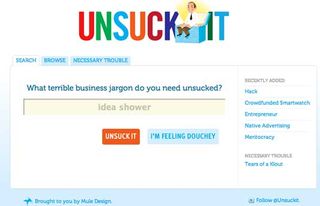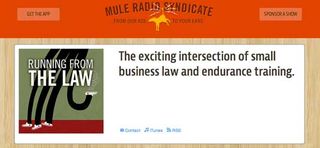Erika Hall on problem solving in web design
The director of strategy at Mule Design talks about creating interfaces to solve problems, cutting industry 'crap' and milking snakes.
Please introduce yourself.
I'm a problem solver. I love analysing and solving problems for people: the thornier the better. That's why co-founding a strategic design studio like Mule was ideal. It's hard to define exactly the kind of work I do. The title we came up with for me is director of strategy. I oversee the research, content strategy, information architecture and interaction design parts of our work: in essence, all of the more analytic parts of brand strategy and interface design.
What's your take on UI? Should startups obsess about it above all else?
The most delightful and enchanting interface won't make a lick of difference if you aren't solving a real problem. Because any interface, any interactive service, is one more thing for busy people to learn. You must make the experience easy, pleasant and memorable because there are a million alternatives. Even people working on enterprise software have to compete on ease of use because consumer technology has reset expectations.
We love Unsuck It - what's the finest piece of business jargon you've encountered?

Clear communication is the interface for human interaction. Business jargon is the linguistic equivalent of junk and clutter. I created www.unsuck-it.com, a humorous lexicon, to point out the absurdity of some of these phrases that people use mindlessly or because it feels smart to do so, and to shame them into speaking and writing more plainly.
The worst I've heard lately is 'growth hacker'. It's all over the Silicon Valley, referring to a marketing person at an early-stage startup. I guess if you are an insecure person working in a company full of engineers, you have to fancy yourself some sort of hacker. Read George Orwell's essay, 'Politics and the English Language'. It's the only content strategy document anyone working in English needs.
You've written a book, Just Enough Research. What's the secret of successful design research?
Bothering to do it. Really, a lot of folks who don't come from a research-driven design background like I do may not have exposure to research, or they may think it's part of a very slow and heavy process that isn't appealing to people who want to develop a product using a light and quick methodology. I wanted to provide an easy entry point that frames research as a set of tools to help you clarify and meet your goals, not a straightjacket that weighs you down.
The other secret is to be collaborative. Even in organisations that conduct research as part of product design, the researchers are often set apart and highly specialised. Even the most exciting research report is less effective than participating first-hand in asking questions and coming up with new insights. And don't be formal; be intentional and ethical about what you're doing. Use those critical thinking skills.
You co-host Running From The Law on Mule Radio Syndicate. Why do a podcast all about business law?

Over the course of my time at Mule Design, I've been involved in a lot of contract negotiations and our lawyer is now a close friend. He's also a distance runner. I do triathlons. We combined forces to talk about some of the common issues that arise in business law and toss in some fun stuff about training and exercise. People seem to like it. When you're in business, legal issues can seem daunting.
What's next for you?
Well, we are working on expanding our strategy practice at Mule. I am very excited about that. I really just want to help increase our industry's focus on what constitutes a productive use of time, and frankly, reduce the number of pointless things that get put out into the world because no one really thought hard enough about whether their assumptions were correct. I am all for fun and purely enjoyable things. But we have enough crap and not enough time and attention.
You've blogged about snake milking. What?
I enjoy what I do very much. Sometimes it gets frustrating, so it helps to think of other jobs to put things in perspective. Snake milking, extracting venom from poisonous snakes by hand, is quite useful. The venom has pharmaceutical uses. But to me, no professional interaction, no matter how tricky, is as difficult and personally unpleasant as milking a snake would be.
This article originally appeared in net magazine issue 247.
Liked this? Read these!
- Download the best free fonts
- Brilliant Wordpress tutorial selection
- How to make an app
How would you go about milking a snake? Tell us in the comments!

Thank you for reading 5 articles this month* Join now for unlimited access
Enjoy your first month for just £1 / $1 / €1
*Read 5 free articles per month without a subscription

Join now for unlimited access
Try first month for just £1 / $1 / €1
Get the Creative Bloq Newsletter
Daily design news, reviews, how-tos and more, as picked by the editors.
The Creative Bloq team is made up of a group of design fans, and has changed and evolved since Creative Bloq began back in 2012. The current website team consists of eight full-time members of staff: Editor Georgia Coggan, Deputy Editor Rosie Hilder, Ecommerce Editor Beren Neale, Senior News Editor Daniel Piper, Editor, Digital Art and 3D Ian Dean, Tech Reviews Editor Erlingur Einarsson, Ecommerce Writer Beth Nicholls and Staff Writer Natalie Fear, as well as a roster of freelancers from around the world. The ImagineFX magazine team also pitch in, ensuring that content from leading digital art publication ImagineFX is represented on Creative Bloq.
